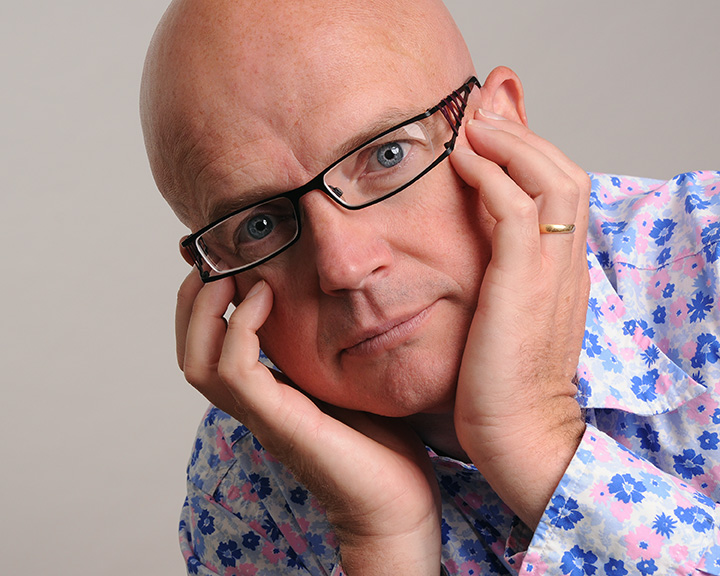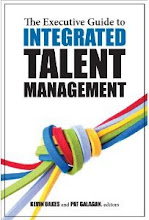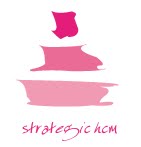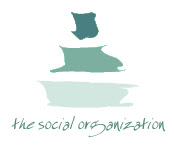You've probably seen some of my posts on the Art of HR. In all of these posts I've noted that I'm not trying to get HR replaced by science but just to be seen as a complement to it.
I think my campaign was triggered mainly by Peter Cheese and the CIPD's new HR framework emphasising science without any nod to art. (I know from chatting with Peter that he believes there is a duality to HR but I don't think this is enough - it needs to be shown on the framework as well.)
It's also largely a response to John Boudreau's focus on HR decision science over the last couple of decades. A decision science is an agreed upon and rigorous set of methods that:
"Provides a logical, reliable and consistent – but flexible – framework that enhances decisions about a key resource, wherever those decisions are made. A decision science does not rigidly prescribe what to do, but rather provides a logical system to identify and analyse key decision issues."
This definition and approach has never worked for me - see these posts made during a five year period over the last seven years:
- Boudreau explains that the consequence of not having a decision science is that ‘talent decision will be made using non-logical decision frameworks’ for example by following politics, fads and fashions. Although I agree about the dangers inherent in following fashions in management theories, I disagree that logic is the sole basis for creating a new strategic role for HR. Given the degree of complexity in business, I believe ‘non-logical decision frameworks’ like creativity provide the key to HCM.
- “Talent management is not an imprecise art form. Rather, it is a rigorous science based on solid numbers.” It’s complete nonsense of course, and I don’t understand how Boudreau gets away with it.
- Boudreau has been encouraging us to think more like scientists – to get between the ears of our leaders. We need to ask are we using the evidence that exists in our organisations, in the scientific world ie evidence that already exists, and how do we look beyond the evidence to influence decision making.
So it's great to see Boudreau suggesting that he now sees HR as art, with a little dollop of magic. And if HR's not going to be taken over by Finance then it needs to be an art, not just a science.
Well... exactly! (the first time I"ve ever agreed with John Boudreau.)
I'd like to claim some credit for this reversal but I suspect it's probably just a consequence of working with Ed Lawler at USC who I think is one of our most progressive academics even if he did get it completely wrong on performance management in the Talent Management book we both contributed to (see 1,2,3,4).
Anyway, whatever the basis, it's good to have Boudreau in the Art of HR camp. And I do appreciate the suggestions around Magic - I think that may have to be a theme for next year.
By the way, quite coincidentally, I've been reminding myself about the work of Roger Martin on validity and reliability.
See this quote I included in my Strategic HCM book:
'Companies don’t realize that when they make their systems more reliable, they render them less valid or meaningful. In other words, the processes produce consistent outcomes, but the results may be neither accurate nor desirable. That’s because, to make their processes more reliable, companies have to reduce the number of variables and standardize measurements. To achieve high validity, however, systems must take into account a large number of variables and use subjective measurements. Adding squishy variables and using gut feel allows for outcomes that are more accurate, even though the processes may not be able to deliver accurate results consistently... For instance, CEOs should go out and talk in person to customers, even if the sample size isn’t statistically significant, rather than sit in their offices and make decisions based on statistically significant market research.'
Martin notes that reliability thinking cannot make the leap from mystery to heuristic but has produced masters of the algorithm.
Instead we need to identify mysteries, develop into heuristics (an aid to problem solving) and create algorithms (a recipe). For example 3D drawing began as a mystery, evident in early paintings that lack depth. Artists then observed foreshortening and began incorporating it into their drawing as a rule-of-thumb that objects could appear to recede into the distance by drawing them increasingly smaller. This evolved into formulaic methods such as the vanishing point and other for creating the illusion of depth in a 2D plane.
I think this is what Boudreau is referring to by magic (mystery), art (heuristic) and science (algorithm) as well. And Martin's point stands too - we can't create innovative HR functions or practices by focusing on reliability or algorithms - ie science.
Hence the need for the art of HR.
- Consulting - Research - Speaking - Training - Writing
- Strategy - Talent - Engagement - Change and OD
- Contact me to create more value for your business
- jon [dot] ingham [at] strategic [dash] hcm [dot] com





























